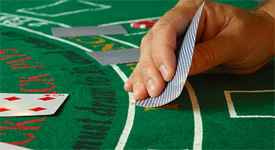Counting History

Have you wondered how exactly the people who deal with card counting manage to keep track of all these cards? When you dig up some information on the internet, you will notice that there are many systems available there. They will offer you different schemes for counting cards. They all have their benefits and problems. The simplest system out there is by adding and subtracting 1's. You will have to remove one, when you get a high card and you have to remove one, when you get a low card. If you get a great number, this will mean that there are many good cards in the shoe. In this situation, the player will have the edge over the house.
Also, you want to keep track of the decks that are in the shoe. That way you will get the true count. That's how you will understand the true density of good cards in the deck and in the shoe.
There are many things that each person that deal with card counting must not do. They cannot memorize each card in shoe. This is impossible. They do not know what the next card is going to be, except Dustin Hoffman in Rain Man. They have simply the general idea of what's going on within the deck. That's how the players gain the advantage over the house.
How everything started
The history of card counting starts in 1950s, when the first strategies related to blackjack emerged. The person who developed this system of counting cards is Edward Thorp. He is a mathematical genius, which allowed him to have better and deeper understanding about the deck and the card flow.
Some books were published on this subject to educate the people about the card counting. One of these books included example of simple systems, which will help the people understand how exactly counting cards works.
Probably the most popular and useful system, which could be found on the internet is hi-lo system. This is really simple system, where the players will have to learn the patterns of card flow.





